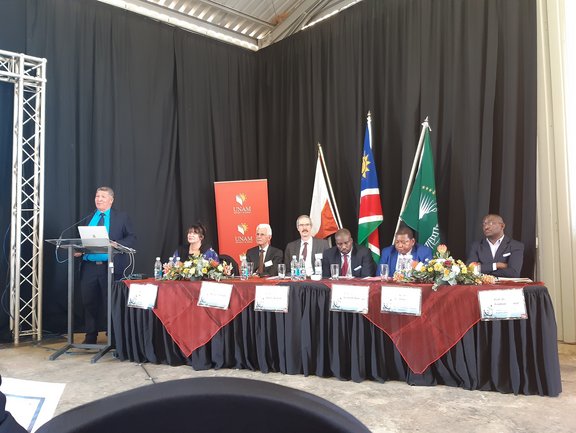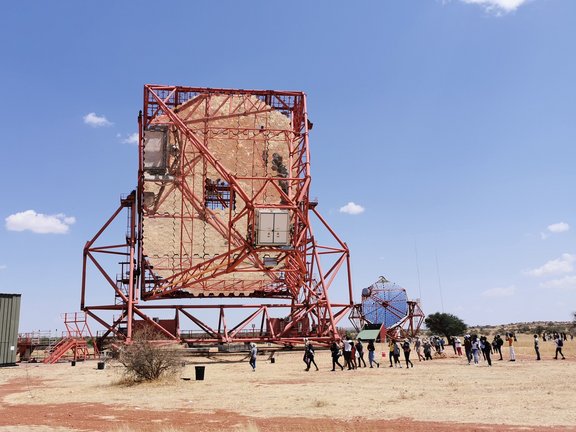After welcome at the site by the Vice-Chancellor of the University of Namibia, Werner Hofmann and the current director of H.E.S.S., Stefan Wagner, spoke about the making and achievements of H.E.S.S. respectively. Messages followed from officials from Namibia, Germany, France and South Africa, including the German and French Ambassadors to Namibia, as well as from Renate Schmidt who with her company has built the first four telescopes and completed the fifth one. The keynote speech by the Deputy Prime Minister of Namibia rounded off the formal part of the event. Afterwards, the guests had the opportunity to visit the telescopes and to talk informally at a reception.
H.E.S.S. is currently the only instrument observing the southern sky in high-energy gamma-rays and is also the largest and most sensitive telescope system of its kind. Its scientific achievements, which have produced some 250 articles in prestigious journals and about 1000 theses, have been widely recognised, including the Descartes Prize of the European Commission and the Rossi Prize of the American Astronomical Society. During the 20 years of operation, the telescopes were repeatedly upgraded to the latest technical state, in particular with modern cameras. The thus improved performance made it possible to extend operations of H.E.S.S. beyond the originally planned period.
The ceremony was part of an International Symposium on High Energy Astrophysics from 16 to 18 October 2022, organised by the H.E.S.S. Collaboration and the University of Namibia (UNAM). Prominent international, regional, and local researchers met to celebrate 20 successful years of H.E.S.S. operations in Namibia and explore its future impact. On the first day, the programme featured a visit to the H.E.S.S. telescopes with a guided tour.
Finally, on the following Sunday, H.E.S.S. was open to the general public. More than 500 interested people showed up for this open day in bright weather (there had been repeated rainstorms before) - a great success, which also excited the local press! There were presentations, hands-on experiments, guided tours and over 50 poster stations where the scientists were on hand to answer questions. Among other activities, UNAM was represented with a mobile planetarium. The local organising team, the H.E.S.S. collaboration and UNAM were very pleased with the very good attendance, which clearly exceeded expectations.
H.E.S.S.: High Energy Stereoscopic System

